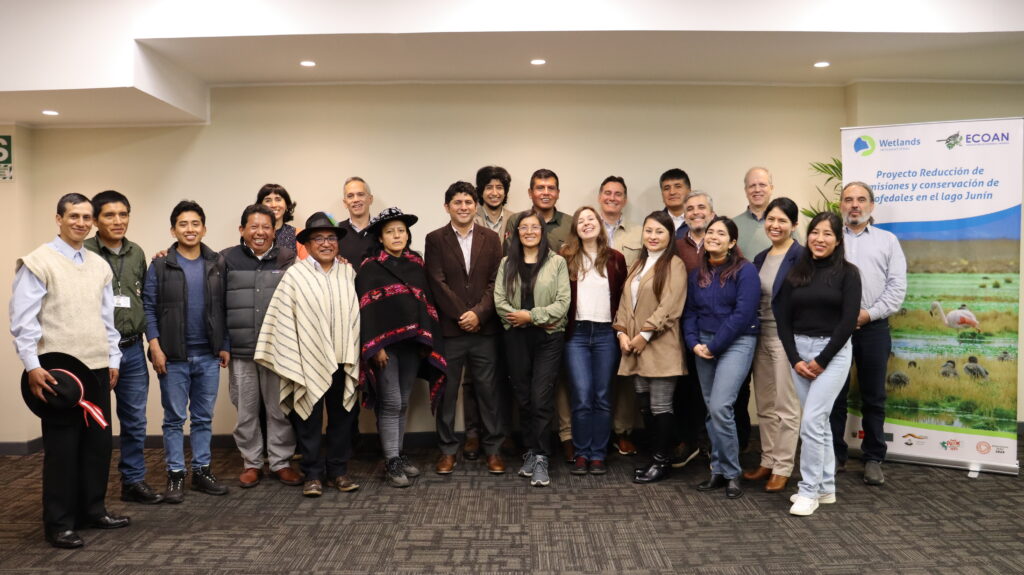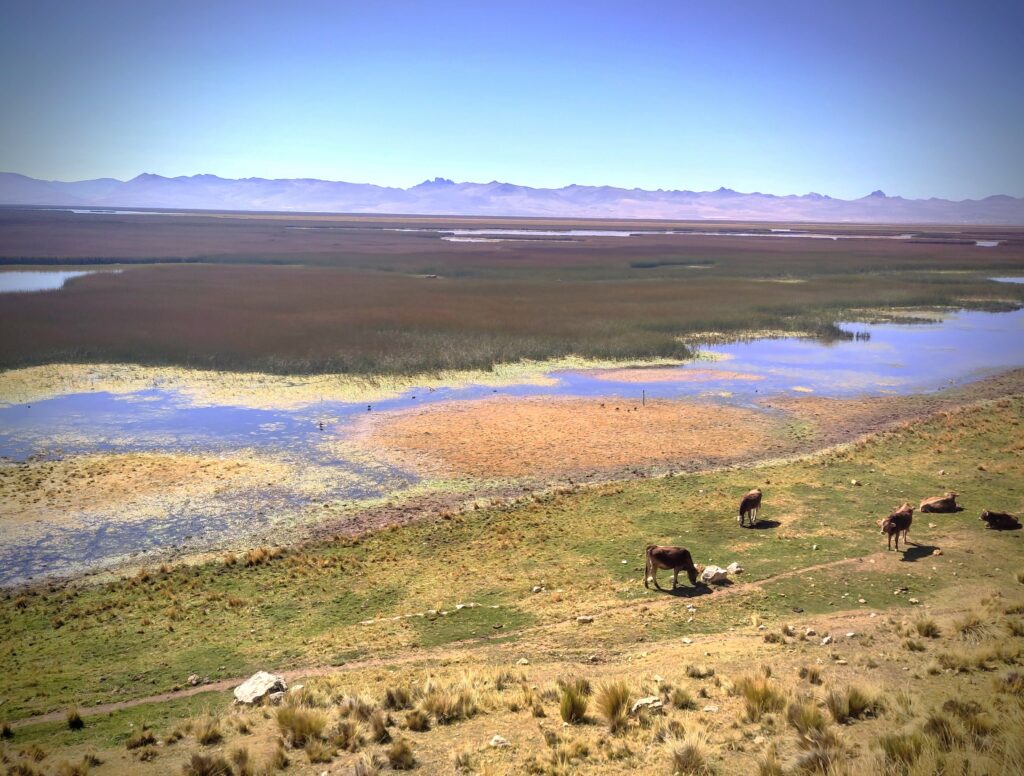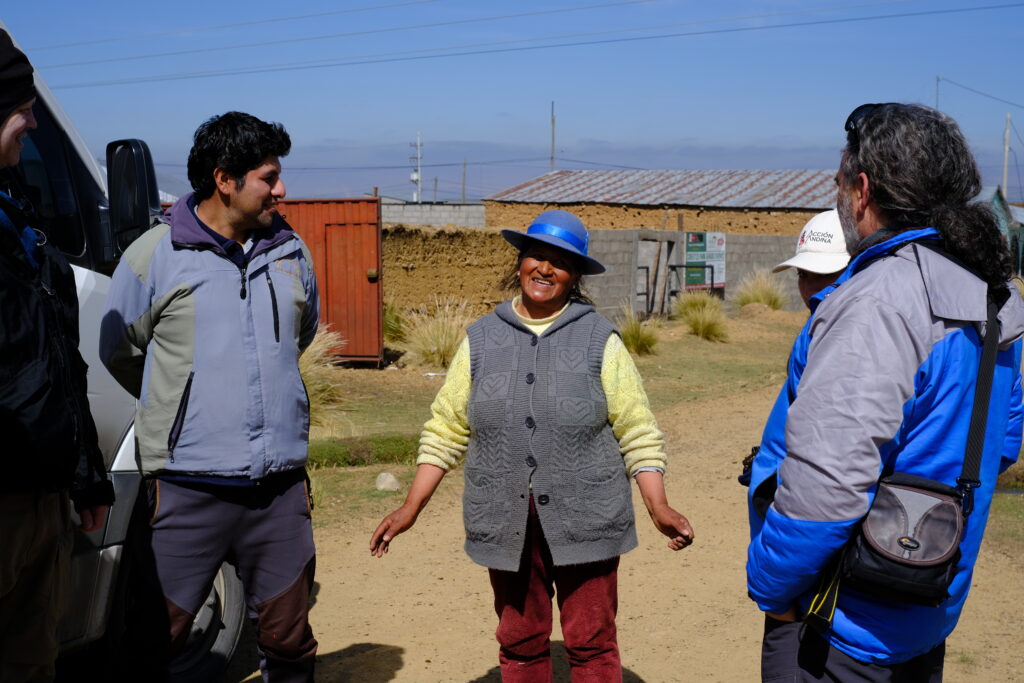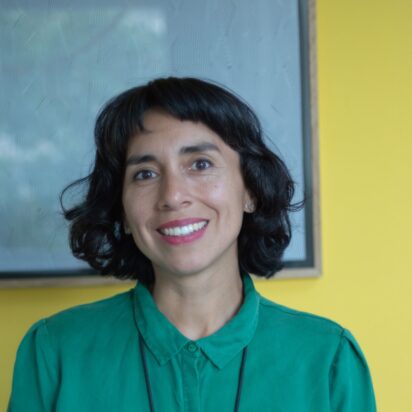
Restoring Chinchaycocha Lake: A Journey to Protect Peru’s Andean Peatlands
-
Peatlands
It has been more than fifteen years since my last journey into the Altiplanic. Today, my path leads me to Peru, to the Chinchaycocha Lake (also known as Junín) with the launch of a 5-year project aiming to protect and restore peatlands in the High Andean Region. This initiative has been made possible by the support of Greenchoice.
Our project began with a kick-off gathering in Lima, where diverse voices converged with a shared purpose. Representatives from ECOAN, the government’s SERNANP, the local communities, Face the Future, Care for Ecosystems, and Wetlands International Latin America & Caribbean, alongside the Global Office, came together to discuss concerns and hopes for the Chinchaycocha Lake, creating a foundation for open and honest dialogue in the upcoming years.

In our next step, we embarked on our journey to the Junin and Pasco provinces, home to the majestic Lake Chinchaycocha, embraced by the ancient peatlands— or “bofedales”, as the locals call them. For those unfamiliar with peatlands, peatlands are areas of land made up of peat. Peat is a type of soil made of dead plants that have not completely rotted due to waterlogged conditions. It serves various ecosystem services such as carbon storage, water regulation, and biodiversity support, and it takes thousands of years for a large area of peat to form.
What you might have heard about peatlands is that they are the largest natural terrestrial carbon store. Yet, as I traveled through Peru, it became clear that their significance transcends the most popular narrative. Their biodiversity and cultural heritage are equally profound, intertwined with the lives of the communities that have stewarded these lands for generations. Peatlands in the Altiplano, though limited in their reach, possess unique characteristics that demand our immediate attention. Historical impacts such as overgrazing, peat extraction, mining, and hydropower activities have left lasting scars on the landscape, compromising their future.
While we approached the area, the bus ride from Lima to Junin was lively at first, filled with chatter about species shifting scientific names, shared stories from remote landscapes, and bursts of laughter. But as we climbed higher, the team suddenly became silent. At around 2.500 meters, the high altitude symptoms called “puna” or “soroche”, began to set in—heavy heads and sleepy eyes. Now the bus moves slowly, and the road -the only flat surface around- is encroached by steep slopes, geometric forms defying nature.
We finally arrived at Chinchaycocha Lake. The landscape is breathtaking, the vastness of the area, and the bright and fresh colors amazed me. This breathtaking feeling could also be explained by the shortness of breath caused by the “soroche”. Now I am at 4.083 meters above sea level, and coming from one of the lowest-lying countries in Europe – the Netherlands – this was an adventure.

The adventure was not just in the journey but in the rediscovery of my “birdwatcher” spirit awakening after years of paused activity. Latin names of species I thought I had forgotten came rushing back with each sighting. My happy anxiety might be due to the presence of iconic species inhabiting the lake, a reminder of the reserve status as a Key Biodiversity Area (KBA): two range-restricted endangered aquatic frogs (Telmatobius brachydactylus and T. macrostomus), the endangered fish Orestias gymnota, the endangered and restricted Podiceps taczanowskii, and the species Laterallus tuerosi, Asthenes virgata, Geositta saxicolina and Cinclodes palliates. Wow! Just a brief encounter with these species was a sort of a miracle…and gave me hope.
Among the most notable of these species is the giant frog, once part of the local diet but now protected by law and the communities themselves. My growing interest in the relationship between communities and their natural environment has deepened my conviction that the involvement of local actors is vital for any conservation/restoration effort to succeed. Lake Chinchaycocha is not an exception. Over the years, organizations like ECOAN, WILAC, and SERNANP have worked tirelessly with local actors to improve grazing practices and promote ecosystem recovery, contributing to hopeful outcomes of the broader High Andean programme. Wherever we go, people receive us with kindness and sympathy. Smiles and hugs reminded me of the human connection I cherish in this part of the world. North Junin quechua is the language of the land, but I was grateful that my native Spanish allowed me to communicate easily. The people of Junin and Pasco are hardworking, keeping alive the ancestral practices that have shaped these landscapes and rooted in the centuries-old tradition of herding sheep, alpacas, and llamas, vital for both sustenance and wool. At the end of the day, one question remains in the air: How do we reconcile the protection of the lake and peatlands ecosystem with grazing and agricultural practices?

On our final day, we visited the Chacamarca Historic Sanctuary where archaeological remains of the Pumpush and Inca culture still whisper their stories, evoking images of pre-Hispanic peoples moving through these lands using the Capac Ñan (Inca road system). This Sanctuary is also the site of the famous Battle of Junin, which commemorates the key confrontation during the Peruvian War of Independence fought through hand-to-hand combat on August 6th, 1824.
As I prepare to come back to the Netherlands, the urgency to protect and restore Lake Chinchaycocha and its surrounding peatlands weighs heavily on me. One of the last images I see from Chinchaycocha lake and its intricate cattails reminds me of a tapestry, a tapestry of ecological, cultural, and historical treasures—each thread delicate, yet resilient. We have a responsibility to safeguard it, and as I reflect on the work ahead, I find relief in knowing that we are part of the solution, bound by a shared responsibility to nurture, restore, and heal it.
More information about this project is available here.
Written by
Sonia Mena

